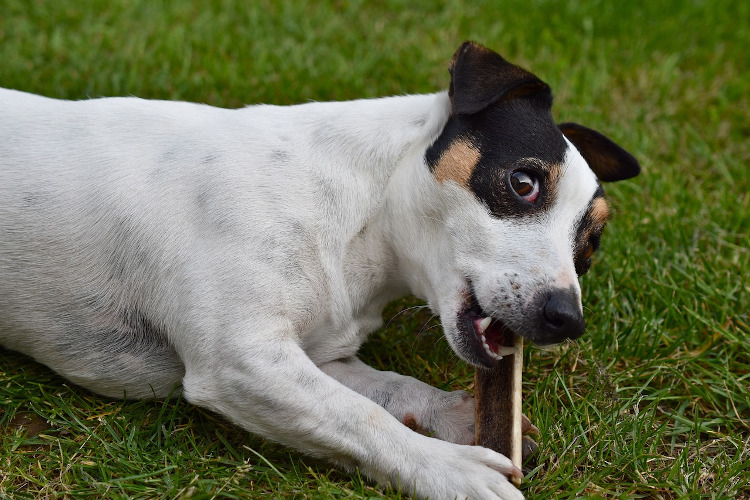Teaching Your Dog to Share
The Benefits of Trading
Teaching a dog to share may seem like a silly idea. However, this skill can help avoid frustrating and even potentially dangerous situations. Have you ever had a moment where your dog grab something only to refuse to give it up? Now imagine if it was something harmful. Not only can these moments be frustrating as an owner, but they can also pose safety risks. That’s where sharing comes in.
 It’s completely natural for dogs to want to protect certain things, like food or toys. This behavior is known as resource guarding, and they do it because they’re afraid they’ll lose an item they value. Unfortunately, this tendency can become more pronounced if you try to overpower your dog or simply take it away. That’s because you’re teaching them that they’ll lose the item if they don’t protect it.
It’s completely natural for dogs to want to protect certain things, like food or toys. This behavior is known as resource guarding, and they do it because they’re afraid they’ll lose an item they value. Unfortunately, this tendency can become more pronounced if you try to overpower your dog or simply take it away. That’s because you’re teaching them that they’ll lose the item if they don’t protect it.
Instead, you can practice sharing with your dog by making trades. This approach takes time and patience, but it can help your dog become more comfortable with having things taken away because they always get something else in return. It also teaches your dog trust and helps strengthen your bond. An added benefit to this exercise? It can create a safer way to play fetch with dogs who become overly aroused during play, leading to enthusiastic toy grabbing or reluctance to “drop it” when they come back.
Here are a few steps to get you started. Also, if your dog shows serious guarding behaviors, stop immediately and consult a force-free, reward-based dog trainer.
1. Start with a Low-Value Item
This is key for teaching trades because you want to set your dog up for success. Think about things they’ve never shown signs of guarding in the past.
2. Have High-Value Treats Ready
These items should be utterly irresistible to your dog – think pieces of chicken, hotdogs, or cheese. No matter what treats you decide on, have a large supply on hand so you can shower your dog with yumminess.
3. Tether Your Dog
Use a leash to secure your dog to the door or a sturdy piece of furniture. This added safety measure provides you with the ability to move away from your dog if they show resource guarding behavior, like:
- Freezing
- Avoidance
- Growling
- Lip curling
- Lunging
- Snapping
If your dog shows any of these behaviors, stop this exercise immediately.
4. Offer Yummy Treats
It’s time to let your dog know you have delicious treats to share! Offer them plenty and remove the low-value item while they eat. If they take an interest in the low-value item, try enticing them away from it by making a trail of treats that leads them in a different direction.
Practice this step several times until your dog seems less interested in you removing the low-value item.
5. Make the Trade
At this point, try offering your dog a high-value treat while simultaneously removing the low-value item. This step requires both hands, and you should repeat the exercise until your dog seems excited by your approach and stops engaging with the low-value item on their own.
6. Advanced Level Trading
When you can comfortably make simultaneous trades with your dog, take it to the next level by removing the low-level item, waiting a few seconds, and then offering the treats. Again, you should only attempt this step if your dog shows no signs of guarding.
Once your dog has a solid grasp of trading this low-value item, you can start practicing these steps with a variety of items. However, remember to take it slowly and gradually work up to more valuable items. The best way to ensure success for you and your dog is by starting with items they have very little interest in before moving on to things they moderately enjoy. Eventually, you can graduate to favorite items and then much-coveted toys.
Before advancing to other items, make sure your dog continues to behave with excitement when you approach. If they seem wary or display any guarding behavior, slow things down and resume simultaneous trading until they become comfortable and excited again.
This important skill can be tricky to teach, and it requires regular practice. You can also help teach your dog to understand that they can share with anyone and in any location by practicing these steps with friends or family in different places. The more often you practice, the faster your dog should progress.

